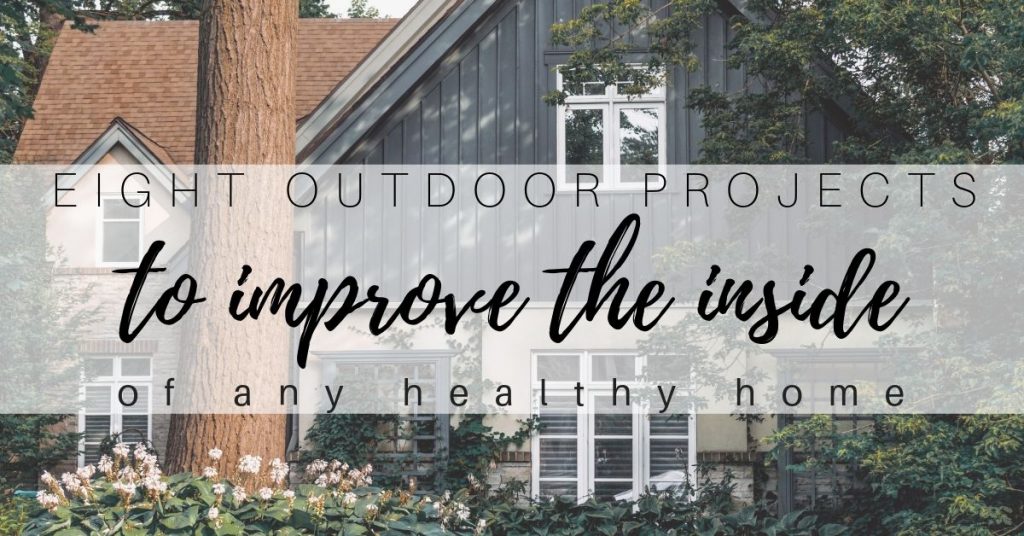
Are you someone who loves to get outside whenever you can? I will admit I am one of those people who could live outside. I would choose outdoors over indoors any day of the week….no matter how hot, cold, humid or windy. And because I live in Minnesota, when summer comes around I NEED to get myself outdoors whenever possible in the summer.
A lot of times I like to get outside to do house projects in the summer and save the indoor projects for winter months when we’re going to be indoors anyways. During the winter I will plan out what I want to get done over the warm summer months so that I can hit the ground running as soon as the snow melts.
And did you know that there are projects for the exterior of your home and yard that can reduce toxins INSIDE your home? So often we focus on the interior, that we forget our home is an entire system and it works together on multiple levels to keep us comfortable and healthy.
These eight projects are perfect for anyone who wants to create a healthier interior space while being outside at the same time.
1. A MODERN VICTORY GARDEN
You can use your lawn and landscaping spaces to make a really tasteful (and tasty!) garden for your family to use. Gone are the days of a garden with rows of corn and beans. Instead, you can make a beautiful space by incorporating flowering plants, herbs, fruits and veggies all in one place.
Not only will this make a beautiful display and make your yard beautiful, but it is a self-sustaining practice. The amount of travel that it takes for a piece of produce to reach our grocery stores is really eye opening. The more food you grow and eat locally, the fewer pesticides and chemicals you’re allowing into your home.
Plants around your hard are also beneficial for our air. Plants purify the air, and so if these gardens are near an outdoor living space or dining area, you’ll reap those benefits as well.
Even if you don’t have a lot of space, you can add a container here or there to grow your own food or herbs as well. Or maybe your home is like mine and had plants and bushes already planted. You’d be surprised how you can use those plants as well. For example if you have Lilacs, Ashley from Practical Self Reliance has a pretty great list of how you can use lilacs in the kitchen.
If you’re just starting out, this post from Lisa at A Country Girl’s Life is super helpful to start some easy fruits and veggies.
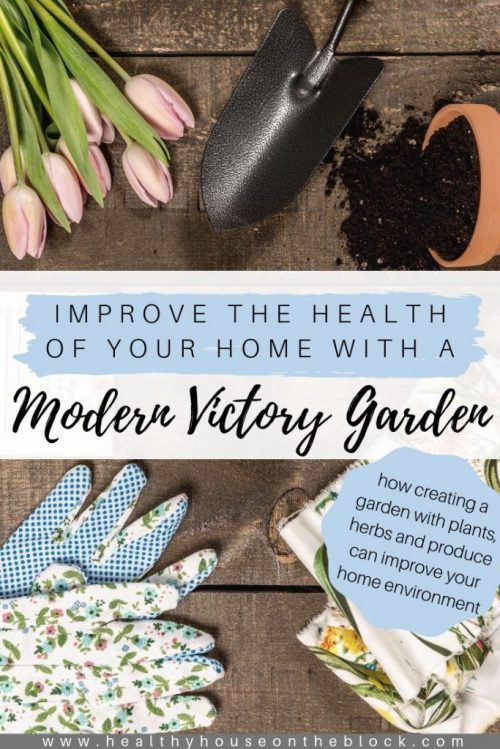
2. MAKE SPACE TO EAT AND COOK OUTDOORS
There are so many ways to choose cooking outdoors in the summer. First, adding heat to your home and moisture from cooking can negatively affect your indoor air quality when it’s already a battle to keep the indoors cool and dry.
Second, the CO2 that is let off from gas appliances usually has no place to escape in the summer while we have our homes sealed up to keep them cool. Unlike the winter, when we might crack a window while we’re cooking.
Cooking food outdoors allows the heat, CO2 from natural gas appliances and moisture from food cooking to be expelled into the outdoor air, rather than your home. Outside these components will dissipate really quickly and they become diluted. Inside, this isn’t the case as it adds to a smaller amount of air and can affect the indoor air quality quickly.
Creating a space where you can grill or cook outside doesn’t have to be complex or complicated. Some families grill on their driveways, others on a deck or patio. A bonus is if you can manage to create an outdoor eating area to allow your body extra time outdoors.

3. CLEAN SCREENS AND FILTERS
So often we forget about our window screens until they are filled with pollen and dust. The summer is a great time to either vacuum or hose them off and get rid of the contaminants that adhere themselves to your screen.
The dirt and dust that travels through the outdoor air can contain allergens as well as pesticides and herbicides from other yards and gardens. That means every time you open up your windows, those contaminants can filter into your home.
Simply vacuuming your screens with a brush may be enough, but for an even deeper clean you can use an exterior window cleaner and attach it to a hose to clean the window and screen outside at the same time.
It’s also important to clean vents and change filters during the summer months. Venting that allows fresh air into our home, or venting that safely displaces combustion gas from appliances can get dirty and plugged over time. Checking these vents and cleaning out dust, debris, lint and other blockages will not only help our home’s indoor air quality, but it can also help our appliances and systems run more efficiently.
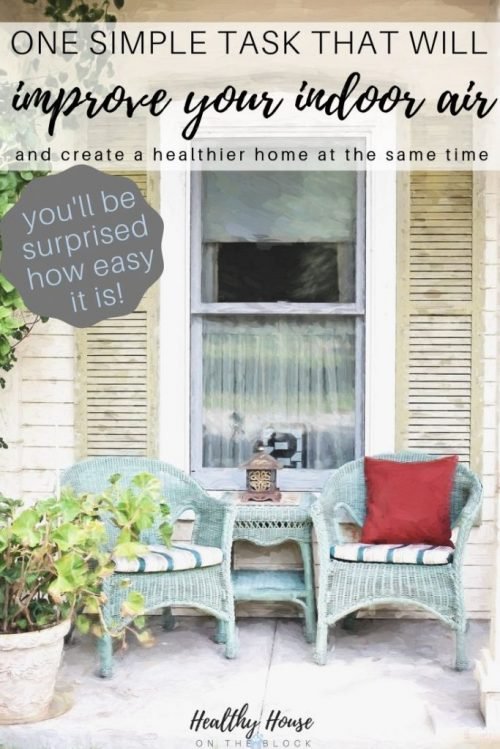
4. ADD OR CLEAN YOUR GUTTERS
Gutters are such an underrated part of keeping a healthy home. Gutters safely take water away from your home and can drastically improve homes that have wet soil around the foundation.
Anywhere your roof terminates and allows water to pour onto the grass or landscaping around your home should have gutters on them. Even if the water is pouring onto concrete, it can cause the concrete to settle and shift prematurely due to the high amount of moisture.
Once you have gutters, it’s important to remember to clean them out (or install guards to keep debris out). If gutters are clogged and full of debris, it can diminish the effectiveness of rerouting the water and instead allows the water to spill over the side. This will eventually wear away at the soil and landscaping around your home. Eventually it can turn into problems with a foundation with leaking and cracking over time.
5. PAINT OR STAIN WOOD COMPONENTS
Even modern homes have wood components on the exterior. Many homes will have wood decks, patios or trim somewhere around the house. Keeping the wood sealed can not only help the appearance of your home, but it can also keep the thermal boundary of your home in tact.
Wood that is around doors or windows can begin to deteriorate when it isn’t sealed properly with either a paint or a stain. Once the wood begins to deteriorate, which usually begins at the bottom where it gets the most contact with moisture, it continues and eventually ends up affecting larger parts of the wood until it must be replaced.
Once wood begins to deteriorate around your home, it becomes a spot for insects and then animals to use as either a home or feeding ground. Eventually there can be spots in the wood trim that will allow moisture, rain or insects to get behind your siding and affect the home’s barrier between the exterior and interior.
Simply painting or staining wood every few years can help keep a handle on these maintenance tasks.

6. CREATE A GARAGE WORKSPACE
If you’re like me, you might love a good repurposing or DIY project. Often times we make space in our homes to do these projects, which can introduce solvents, glues with formaldehyde and VOCs to our interior space.
If you have the space, try making a work area in your garage to allow these chemicals to safely off-gas outdoors while your working, rather than getting trapped indoors. If you have an area near a window, this can also be beneficial to send those chemicals outdoors. Plus it’s better for you while you’re working on your project.
Having a workspace outdoors also helps with keeping any dust from your project (which can contain various VOCs from paints and stains) outdoors as well. Once this dust enters your home, it can be really difficult to remove it quickly. It often travels throughout our home and into our HVAC system, where it can get blown back through the house.
An outdoor workspace can also give you a space to let your projects dry and safely off-gas outdoors rather than having them in the home to do this. It’s better for your indoor air quality and better for your short term health.
7. CHECK THE GRADING AROUND YOUR HOME
Ultimately, we want our homes built up on a bit of a hill. We want all the slopes around the house to allow water to run AWAY from our foundation and our spaces. The more water we can keep away from our home, the better for our interior. Moisture is quickly absorbed by our foundation walls and can create a really damp, humid environment inside the home.
We know that high humidity inside the home can not only promote mold and mildew growth, but it can also create an environment where VOCs off gas at a more rapid rate and dust mites reproduce and make their homes.
By keeping the moisture away from the home through what we call, POSITIVE GRADING, you can not only prevent a multitude of problems to your foundation wall, but you can also improve your indoor air quality by reducing moisture inside.
Take a quick walk around your home early this summer to see if any of the soil nearby is sloping towards the walls of your home. If it is, check out this tutorial on how to grade your hard slope by Amy at Pretty Purple Door. It’s easy to follow and she’s got it explained down to a science. It’s really less complicated to fix these things than you think and it will help the interior of your home as well.
8. SEAL GAPS & HOLES
Whatever kind of siding or trim you have at home, it’s important to check it at least once a year to make sure that your home doesn’t have open spots that allow moisture or insects to get behind your siding.
If you do find a gap or hole in the siding, you can most often easily seal it up with an exterior caulk or silicone. This will help keep the thermal barrier of your home in tact and prevent any insects from creating a home in your walls.
The more secure your thermal barrier is, the more controlled your indoor environment is. Elements from the outdoors can quickly affect your interior if there are spaces left unsealed. Moisture that gets behind siding often has no way of getting our or evaporating, which can cause big problems behind your walls without you evening knowing it.
A damp and humid space inside means not only an uncomfortable environment, but also a space that promotes mildew and mold growth, off-gassing of VOCs and dust mite reproduction.
Taking care of your exterior can be just as important for your interior space when it comes to creating a healthy environment.
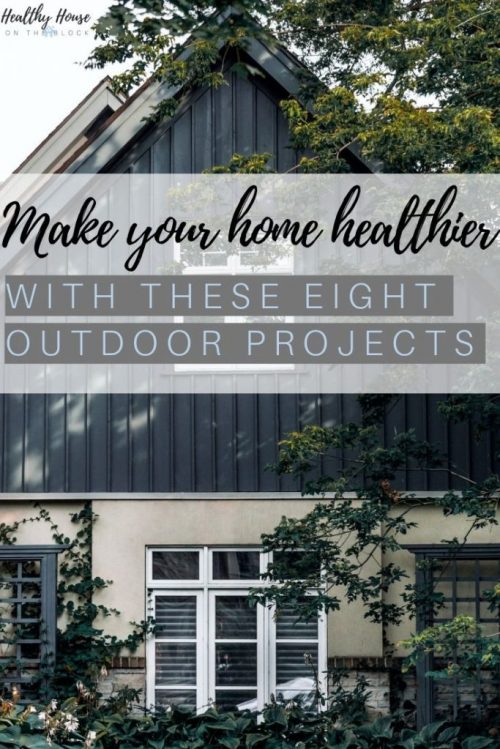


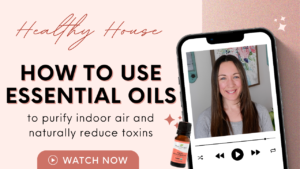

These are perfect spring and summer reminders for the little things I need to do. I always for the screens but first on our list is the BBQ area and flowers.
I am saving this list for a great fall/winter list. In SE Texas, it’s way too hot in the summer to be working on projects, we usually do them in the cooler months here. I love having our backyard garden, and we typically do spruce up a few things such as cleaning the gutters and pressure washing the concrete at least once or twice per year. We do need to clean out our window screens now that pollen season is almost over, though!
Oooo so many great tips!!! We need to clean our gutters super bad. Something I’ve been slacking with
I love this list. I really want to start an herb garden. I tried a microgreen garden and it worked. Also great idea to create a workspace in the garage, I will be doing that!
These are great suggestions. I love the idea of improving your home both insides and out.
These are all wonderful ideas! it is very important to keep the surroundings and exterior of the house clean and free of harmful substances!